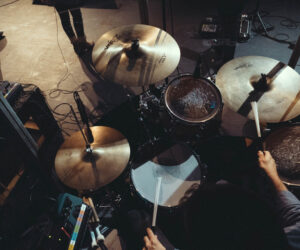In case you missed it, check out “Simple Yet Vital: Best Practices In Developing Input Lists And Stage Plots” by Eric Ferguson here.
• Enjoyed your article on input lists, etc. Been in the business 45 years and no one has outlined it better. Still working at Westbury Music Fair in Westbury Long Island, my plan for retiring at 85 is working out perfectly. Hopefully some of these kids will read your article and make my life a little easier. As you know, they won’t, and alas I will grit my teeth and change half of the stage when the techs arrive. Happy New Year. Fight the good fight.
Charlie Trantum
Head of sound at Westbury Music Fair
Local One I.A.T.S.E.
• I just read your awesome article on stage plots and input lists. I think the argument of drummer or audience perspective really needs to end. Admittedly, back in the day, we did in fact used to do drummers perspective almost exclusively in the studio (and live for that matter for inputs). Once we got to a more video-centric world with all of the concerts and etc. that we were mixing, it always made more sense to use audience perspective for everything and end the drummer perspective issue. It just helped to keep things organized as a GTR L would mean guitar on the audience perspective left side. I guess it matters whether you are creating or recreating. Anyway, that’s my 2 cents.
Roger Talkov
Managing Partner
Parsons Audio LLC
• I really enjoyed your article about stage plots and input lists. As an engineer working with a local folk festival for the last 20 years, it’s been an ongoing challenge to get the festival artistic and production staff to get better information to the people on the front lines.
There are two main issues working against us. First, most of the staff are short term seasonal and/or part time employees, with a fairly steady turnover (and occasionally a complete overhaul), so often there isn’t anyone who knows how to properly vet the information provided. The challenge is the artists themselves. The festival is held over Memorial Day weekend, but the artists have to apply by late November, are usually booked by the end of December, and have to submit technical information with the initial application. (I know exactly what you are thinking here…)
About 15 years ago there was a band on my stage that was “not as advertised” on Friday evening. Even the name had changed. It seems the key members of the band that was supposed to play had a major falling out on the Monday before the festival, resulting in a breakup. One of them, recalling that they had a gig in four days, put together a new group to play. They showed up without a plot or input list, without giving anyone at the festival a heads up that things had changed, and were very demanding. They managed to struggle through a 35-minute set, about half of which was spent changing instruments and deciding what to play.
That night, over drinks with a bunch of other festival techs, when the discussion shifted to how inaccurate some of the tech info had been, my A2/stage manager/wife waited until others had said how bad their day was, then told the gang about our adventures. By the end of the night, we had created the “Most Mutated Band Award” for the artist with the most mutated stage plot at the festival. For a number of years, every stage had its daily and weekend awardees, and we crowned a grand prize winner on Monday night.
We’ve also had the complete opposite, with one of the bands that has played our stage almost every year. The first time, looking at the stage plot in advance, we thought it was going to be a real challenge. (We have 35- to 45-minute sets, with 10-minute changeovers; most acts are small, and acoustic, but sometimes we get bigger groups.) Six people, about 25 inputs listed. Three hours before they’re scheduled to play, the bassist shows up and says: “Hi, we have changes to our setup. There are only five people, these six inputs are gone, and can we move these others over here? On the way down we worked up a set list that minimizes the number of instrument changes we have.” Getting them onstage, miked up, line checked and ready to play took six minutes, and they get to use the four extra minutes of set-up time to play an additional tune.
Things are a lot better now but there’s still a long way to go. One aspect that will never change is that the acts will change between the day they send in their tech and when they arrive on stage. These days, they get sent a confirmation letter about 30 days out from the festival that requires a response, including a current stage plot and input list. Even that’s not always accurate, but it helps.
I’ve rambled on about stuff that probably is of little interest to you, so I’ll get to the point of my email. Your input list has Ringo on drums, but the stage plot shows Animal. Which one is it? The answer is going to dictate which mics I use.
Terence Gray, CTS
• First off, great article! You reminded me off all the “no-nos” I’ve seen over the years when doing live sound. You really need to see it to believe just how many outdated input lists and stage plots are being circulated.
One thing you might’ve mentioned (assuming the article had space) is cable paths. I used to work at one venue regularly that had quite a lot of stage space. You really had to think carefully about how to get the sub snake, power, and monitor wedge cables downstage for the lead vocal and whatever/whoever else was positioned along the stage lip.
With few exceptions you this had to be done without running cables from upstage. They had to be run either through a cable ramp that cut across at the far stage left entrance (often unused), or over the doorway, then to the downstage edge, and finally across to the center position(s). The end result was a clean area between the band members downstage and those mid stage, enabling all to move around with freedom. Dress this up with a nice rug and you’re off to the races!
I suppose crews in venues with these peculiarities would already accommodate for it by default, hopefully. Then again, some people won’t realize the error until sound check is set to begin in five minutes (says Murphy!” I did see some stage plots with an “X” through this gap and a “No Cables” note. This, of course, made it very clear to those of us who saw the plot prior to setup.
Charlie Post
PostProductions Audio
Chicago















